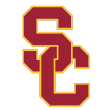Quarterbacks
1. *Josh Allen, Wyoming
2. **Sam Darnold, USC
3. *Josh Rosen, UCLA
4. Baker Mayfield, Oklahoma
5. *Lamar Jackson, Louisville
6. Mason Rudolph, Oklahoma State
7. Kyle Lauletta, Richmond
8. Mike White, Western Kentucky
9. Luke Falk, Washington State
10. *Chase Litton, Marshall
Running backs
1. *Saquon Barkley, Penn State
2. *Derrius Guice, LSU
3. *Ronald Jones II, USC
4. Nick Chubb, Georgia
5. Sony Michel, Georgia
6. Rashaad Penny, San Diego State
7. *Nyheim Hines, NC State
8. *Kerryon Johnson, Auburn
9. Royce Freeman, Oregon
10. Kalen Ballage, Arizona State
Fullbacks/H-backs
1. Jaylen Samuels, NC State
2. Dimitri Flowers, Oklahoma
3. Nick Bawden, San Diego State
4. DeAndre Goolsby, Florida
5. Khalid Hill, Michigan
6. Austin Ramesh, Wisconsin
7. Deon Yelder, Western Kentucky
8. Marcus Martin, Slippery Rock
9. Daniel Marx, Stanford
10. Donnie Ernsberger, Western Michigan
Wide receivers
1. *Calvin Ridley, Alabama
2. *D.J. Moore, Maryland
3. Anthony Miller, Memphis
4. *Christian Kirk, Texas A&M
5. James Washington, Oklahoma State
6. D.J. Chark, LSU
7. *Courtland Sutton, SMU
8. Dante Pettis, Washington
9. *Tre'Quan Smith, Central Florida
10. DaeSean Hamilton, Penn State
Tight ends
1. Dallas Goedert, South Dakota State
2. *Hayden Hurst, South Carolina
3. *Mark Andrews, Oklahoma
4. Mike Gesicki, Penn State
5. *Jordan Akins, Central Florida
6. Ian Thomas, Indiana
7. Troy Fumagalli, Wisconsin
8. Jordan Thomas, Mississippi State
9. Will Dissly, Washington
10. Durham Smythe, Notre Dame
Offensive tackles
1. *Kolton Miller, UCLA
2. Mike McGlinchey, Notre Dame
3. *Connor Williams, Texas
4. *Geron Christian, Louisville
5. *Orlando Brown, Oklahoma
6. Tyrell Crosby, Oregon
7. Martinas Rankin, Mississippi State
8. *Brian O'Neill, Pitt
9. Desmond Harrison, West Georgia
10. Chukwuma Okorafor, Western Michigan
Guards
1. *Quenton Nelson, Notre Dame
2. Isaiah Wynn, Georgia
3. Will Hernandez, UTEP
4. Austin Corbett, Nevada
5. Colby Gossett, Appalachian State
6. Braden Smith, Auburn
7. Wyatt Teller, Virginia Tech
8. Skyler Phillips, Idaho State
9. *Sam Jones, Arizona State
10. Sean Welsh, Iowa
Centers
1. *James Daniels, Iowa
2. Billy Price, Ohio State
3. Frank Ragnow, Arkansas
4. Scott Quessenberry, UCLA
5. Mason Cole, Michigan
6. *Will Clapp, LSU
7. Coleman Shelton, Washington
8. Jake Bennett, Colorado State
9. Brian Allen, Michigan State
10. Bradley Bozeman, Alabama
Defensive ends
1. Bradley Chubb, NC State
2. Marcus Davenport, Texas (San Antonio)
3. *Breeland Speaks, Mississippi
4. Tyquan Lewis, Ohio State
5. *Sam Hubbard, Ohio State
6. Andrew Brown, Virginia
7. *Rasheem Green, USC
8. *Arden Key, LSU
9. Da'Shawn Hand, Alabama
10. Kylie Fitts, Utah
Defensive tackles
1. *Da'Ron Payne, Alabama
2. *Vita Vea, Washington
3. *Taven Bryan, Florida
4. B.J. Hill, NC State
5. Maurice Hurst, Michigan
6. *Harrison Phillips, Stanford
7. Nathan Shepherd, Fort Hays State
8. Deadrin Senat, South Florida
9. *Tim Settle, Virginia Tech
10. Derrick Nnadi, Florida State
Inside linebackers
1. *Roquan Smith, Georgia
2. *Tremaine Edmunds, Virginia Tech
3. Rashaan Evans, Alabama
4. *Leighton Vander Esch, Boise State
5. Genard Avery, Memphis
6. Oren Burks, Vanderbilt
7. Micah Kiser, Virginia
8. Josey Jewell, Iowa
6. Darius Leonard, South Carolina State
7. Nick DeLuca, North Dakota State
8. Oren Burks, Vanderbilt
9. Darius Leonard, South Carolina State
10. *Christian Sam, Arizona State
Outside linebackers
1. Harold Landry, Boston College
2. Lorenzo Carter, Georgia
3. Uchenna Nwosu, USC
4. Ogbonnia Okoronkwo, Oklahoma
5. *Malik Jefferson, Texas
6. Kemoko Turay, Rutgers
7. Shaquem Griffin, Central Florida
8. *Jerome Baker, Ohio State
9. *Josh Sweat, Florida State
10. *Jeff Holland, Auburn
1. *Josh Allen, Wyoming
2. **Sam Darnold, USC
3. *Josh Rosen, UCLA
4. Baker Mayfield, Oklahoma
5. *Lamar Jackson, Louisville
6. Mason Rudolph, Oklahoma State
7. Kyle Lauletta, Richmond
8. Mike White, Western Kentucky
9. Luke Falk, Washington State
10. *Chase Litton, Marshall
Running backs
1. *Saquon Barkley, Penn State
2. *Derrius Guice, LSU
3. *Ronald Jones II, USC
4. Nick Chubb, Georgia
5. Sony Michel, Georgia
6. Rashaad Penny, San Diego State
7. *Nyheim Hines, NC State
8. *Kerryon Johnson, Auburn
9. Royce Freeman, Oregon
10. Kalen Ballage, Arizona State
Fullbacks/H-backs
1. Jaylen Samuels, NC State
2. Dimitri Flowers, Oklahoma
3. Nick Bawden, San Diego State
4. DeAndre Goolsby, Florida
5. Khalid Hill, Michigan
6. Austin Ramesh, Wisconsin
7. Deon Yelder, Western Kentucky
8. Marcus Martin, Slippery Rock
9. Daniel Marx, Stanford
10. Donnie Ernsberger, Western Michigan
Wide receivers
1. *Calvin Ridley, Alabama
2. *D.J. Moore, Maryland
3. Anthony Miller, Memphis
4. *Christian Kirk, Texas A&M
5. James Washington, Oklahoma State
6. D.J. Chark, LSU
7. *Courtland Sutton, SMU
8. Dante Pettis, Washington
9. *Tre'Quan Smith, Central Florida
10. DaeSean Hamilton, Penn State
Tight ends
1. Dallas Goedert, South Dakota State
2. *Hayden Hurst, South Carolina
3. *Mark Andrews, Oklahoma
4. Mike Gesicki, Penn State
5. *Jordan Akins, Central Florida
6. Ian Thomas, Indiana
7. Troy Fumagalli, Wisconsin
8. Jordan Thomas, Mississippi State
9. Will Dissly, Washington
10. Durham Smythe, Notre Dame
Offensive tackles
1. *Kolton Miller, UCLA
2. Mike McGlinchey, Notre Dame
3. *Connor Williams, Texas
4. *Geron Christian, Louisville
5. *Orlando Brown, Oklahoma
6. Tyrell Crosby, Oregon
7. Martinas Rankin, Mississippi State
8. *Brian O'Neill, Pitt
9. Desmond Harrison, West Georgia
10. Chukwuma Okorafor, Western Michigan
Guards
1. *Quenton Nelson, Notre Dame
2. Isaiah Wynn, Georgia
3. Will Hernandez, UTEP
4. Austin Corbett, Nevada
5. Colby Gossett, Appalachian State
6. Braden Smith, Auburn
7. Wyatt Teller, Virginia Tech
8. Skyler Phillips, Idaho State
9. *Sam Jones, Arizona State
10. Sean Welsh, Iowa
Centers
1. *James Daniels, Iowa
2. Billy Price, Ohio State
3. Frank Ragnow, Arkansas
4. Scott Quessenberry, UCLA
5. Mason Cole, Michigan
6. *Will Clapp, LSU
7. Coleman Shelton, Washington
8. Jake Bennett, Colorado State
9. Brian Allen, Michigan State
10. Bradley Bozeman, Alabama
Defensive ends
1. Bradley Chubb, NC State
2. Marcus Davenport, Texas (San Antonio)
3. *Breeland Speaks, Mississippi
4. Tyquan Lewis, Ohio State
5. *Sam Hubbard, Ohio State
6. Andrew Brown, Virginia
7. *Rasheem Green, USC
8. *Arden Key, LSU
9. Da'Shawn Hand, Alabama
10. Kylie Fitts, Utah
Defensive tackles
1. *Da'Ron Payne, Alabama
2. *Vita Vea, Washington
3. *Taven Bryan, Florida
4. B.J. Hill, NC State
5. Maurice Hurst, Michigan
6. *Harrison Phillips, Stanford
7. Nathan Shepherd, Fort Hays State
8. Deadrin Senat, South Florida
9. *Tim Settle, Virginia Tech
10. Derrick Nnadi, Florida State
Inside linebackers
1. *Roquan Smith, Georgia
2. *Tremaine Edmunds, Virginia Tech
3. Rashaan Evans, Alabama
4. *Leighton Vander Esch, Boise State
5. Genard Avery, Memphis
6. Oren Burks, Vanderbilt
7. Micah Kiser, Virginia
8. Josey Jewell, Iowa
6. Darius Leonard, South Carolina State
7. Nick DeLuca, North Dakota State
8. Oren Burks, Vanderbilt
9. Darius Leonard, South Carolina State
10. *Christian Sam, Arizona State
Outside linebackers
1. Harold Landry, Boston College
2. Lorenzo Carter, Georgia
3. Uchenna Nwosu, USC
4. Ogbonnia Okoronkwo, Oklahoma
5. *Malik Jefferson, Texas
6. Kemoko Turay, Rutgers
7. Shaquem Griffin, Central Florida
8. *Jerome Baker, Ohio State
9. *Josh Sweat, Florida State
10. *Jeff Holland, Auburn



